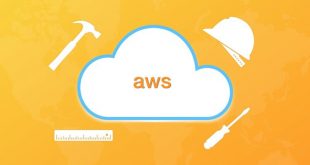The State of Education in Pakistan: Challenges, Progress & the Way Forward
Education is the foundation of a prosperous society, a powerful tool for personal development, and the key to unlocking a nation’s potential. In Pakistan, however, education has long been a subject of debate, concern, and reform. With over 240 million people and one of the largest youth populations in the world, Pakistan stands at a crucial crossroads—either invest in education now or continue to face the social and economic consequences of neglect.
In this blog, we dive deep into the current landscape of education in Pakistan, explore the challenges it faces, and shed light on the opportunities for progress.
The Educational Structure in Pakistan
Pakistan’s education system is broadly divided into five levels:
- Primary (Grade 1–5)
- Middle (Grade 6–8)
- Secondary (Grade 9–10, leading to SSC)
- Higher Secondary (Grade 11–12, leading to HSSC)
- Universities and Colleges
The country also has technical and vocational education, madrasas (religious schools), and non-formal education systems, especially in rural areas. The medium of instruction varies; public schools mostly use Urdu, while private schools often teach in English, creating a noticeable divide.
The Major Challenges in Pakistan’s Education System
1. Access and Enrollment Gaps
Millions of children are out of school in Pakistan. According to UNICEF, over 22 million children (ages 5–16) are not attending school, making Pakistan the second-highest country in the world for out-of-school children. This issue is more severe in rural and underdeveloped areas, especially among girls.
2. Quality of Education
Even among those who attend school, quality remains a serious concern. Many students lack basic literacy and numeracy skills, even in higher grades. Textbook-centric teaching, outdated curricula, rote learning, and untrained teachers further exacerbate the problem.
3. Lack of Trained Teachers
Teacher training is often neglected in both public and private sectors. Teachers in rural areas are frequently underqualified or absent. Low wages, job insecurity, and lack of resources demotivate many passionate educators.
4. Disparities Between Public and Private Education
There is a stark contrast between private and government schools in terms of infrastructure, teaching methods, and student performance. While elite private schools cater to the urban middle and upper class, public schools often struggle with dilapidated buildings, poor hygiene, and scarce learning materials.
5. Language Barriers
English is considered essential for success in Pakistan’s job market, yet many students from Urdu-medium or regional-language schools are at a disadvantage. This language divide further widens the inequality gap in higher education and job opportunities.
Progress and Reforms in Recent Years
Despite challenges, there have been notable efforts to improve education:
- Single National Curriculum (SNC): Introduced to unify the curriculum across the country to ensure equal learning opportunities for all students, regardless of socioeconomic status.
- Education Technology (EdTech): Platforms like Taleemabad, Noon Academy, and YouTube educational channels are making learning more accessible, especially during and after the COVID-19 pandemic.
- Government & NGO Programs: Organizations like The Citizens Foundation (TCF), Zindagi Trust, and Teach For Pakistan are contributing meaningfully to bring quality education to underserved communities.
- Scholarships & Financial Aid: Initiatives like Ehsaas Undergraduate Scholarship Program and HEC scholarships are helping deserving students pursue higher education.
The Role of Private Sector and EdTech
Private schools, tuition academies, and education startups are reshaping the learning experience for many. Apps, online classrooms, and digital resources are bridging learning gaps—especially in urban centers.
Startups like Sabaq, Edkasa, and Maqsad are offering curriculum-aligned content, quizzes, and video lectures for Matric and Intermediate students. This shift to blended learning is a sign of potential educational evolution.
What Needs to Be Done?
To truly transform education in Pakistan, a comprehensive and sustained approach is needed:
- Increase Public Investment: Currently, Pakistan spends less than 2% of its GDP on education—far below the UNESCO-recommended 4–6%.
- Focus on Early Childhood Education: Foundational learning years need more attention and resources.
- Empower Teachers: Professional development, fair salaries, and support systems are critical.
- Make Girls’ Education a Priority: Cultural, economic, and safety barriers must be addressed to keep girls in school.
- Improve Vocational Training: Skills-based education must be aligned with market demands to reduce unemployment.
Conclusion: Hope Lies in Education
Education in Pakistan is not just a basic right—it is a lifeline for a better future. While the road is long and the hurdles many, the dream of an educated, skilled, and empowered Pakistan is still within reach. For that to happen, government bodies, educators, parents, students, NGOs, and the private sector must work hand-in-hand.
Let us raise a generation that not only learns to read and write, but also to think, question, create, and contribute. Because when we educate our children, we empower a nation.
FAQs
- Why is the literacy rate low in Pakistan?
The literacy rate is low due to limited access to schools, poverty, cultural barriers (especially for girls), and inadequate government investment. - What is the Single National Curriculum (SNC)?
SNC is a unified curriculum introduced by the government to reduce inequality between private and public education and promote national cohesion. - Are private schools better than government schools?
In general, private schools offer better infrastructure and quality, but they are not accessible to everyone due to high fees. - How can parents help improve education at home?
Parents can support learning by encouraging reading habits, helping with homework, limiting screen time, and communicating regularly with teachers. - What is the role of NGOs in Pakistan’s education?
NGOs play a vital role by building schools in underserved areas, training teachers, and offering scholarships and alternative learning programs.
 Bloggers Trend Keeping You Up To Date
Bloggers Trend Keeping You Up To Date







